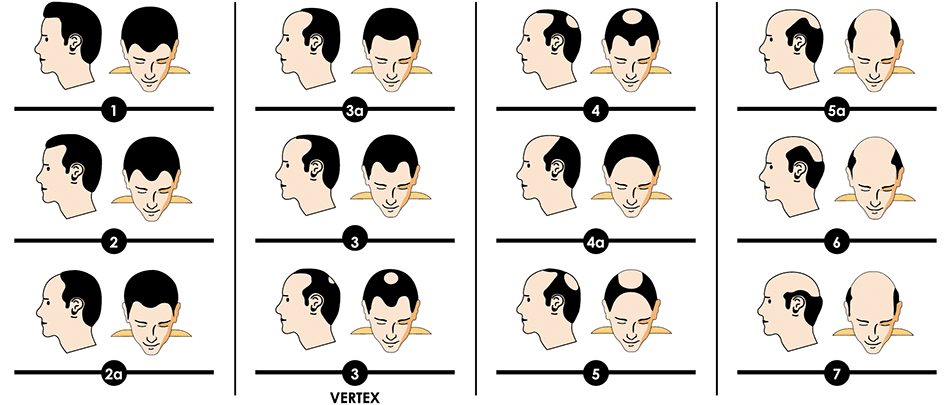
Have you ever heard of the Hamilton-Norwood scale? If not, you’re not alone.
The Hamilton-Norwood scale is a system for measuring male pattern baldness and is used by dermatologists and hair loss experts to classify the severity of hair loss in men. But how does it work, and what can you learn from it? Let’s explore.
An Introduction to the Hamilton- Norwood Scale
In the 1950s, James Hamilton developed the Hamilton-Norwood scale, which was later modified by O’Tar Norwood in the 1970s. It’s used to measure the degree of male pattern baldness on a scale from 1 to 7, with grade 1 being minimal hair loss and grade 7 being complete baldness. Each grade also has its own descriptors that help determine where an individual falls on the scale.
How Does It Work?
Hamilton-Norwood scale categorizes a man’s hair loss based on the extent and location of his hair loss. This helps dermatologists and other experts diagnose any underlying conditions related to hair loss as well as recommend treatments or solutions based on an individual’s unique situation. For example, if someone has grade 5 or 6 hair loss, a physician might recommend surgery or medication in order to halt further progression.
What Can You Learn from It?
The Hamilton-Norwood scale can provide valuable insight into an individual’s overall health and serve as an early warning sign for potential hair loss or scalp health issues. Furthermore, men can use the scale to track their own balding pattern over time and adjust their treatments accordingly if needed. Knowing your position on the scale can also provide a realistic expectation for treatment results and help manage expectations for future outcomes.
When compared to other hair loss scales, the Hamilton-Norwood scale is the most widely used by professionals to measure male pattern hair loss.
